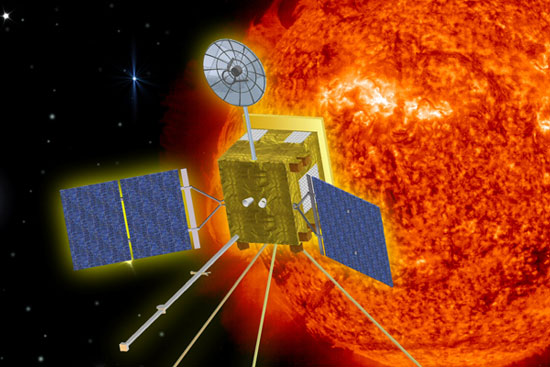Europe launched a satellite to spy on the Sun
A bold idea of the European Space Agency (ESA) will become a reality in 2017, when the agency sends "eyes and ears" to the sun.
Called Solar Orabiter , the satellite will have to be about 26 million miles away from the sun to ensure safety. High-tech tools equipped with Solar Orabiter will analyze the mechanism of solar wind generation (ie radiation streams destroy human communication systems and cause spectacular Northern Aurora phenomenon on the left land).

Solar Orbiter has the task of circling the Sun but always
must keep a distance of 26 million miles to ensure safety.
By 2019, ESA intends to launch another "spy" satellite named Euclid in the hope of explaining the mysterious black energy in the universe, which is thought to be the reason the universe is expanding. fast.
Speaking on the Daily Mail , Alvaro Gimenez, director of the ESA's Center for Scientific Exploration, said that during the round-trip of the sun, Solar Orbiter will suffer frequent temperatures of up to 500 degrees Celsius. , it will have to "launch the eye" and observe the sun through the tiny gaps of the thermal protection net. In other words, Solar Orbiter's mission is not to try to capture high-resolution images of the sun but to try to approach and find the connection between the phenomena that occur in the sun and cosmic phenomena.
"Solar winds and magnetic storms are massive" attacks "from the sun, but we don't know exactly where they come from, where they come from. Solar Orbiter can help us. decipher that mystery, " explained Gimenez.
Meanwhile, Euclid has a mission to map the structure of the Universe with unprecedented accuracy. This observation satellite will penetrate 10 billion light-years directly into the center of the universe and reveal the expansion history of that structure.
One of the biggest mysteries of modern physics is why the Universe is expanding at a faster rate. Surely this acceleration was influenced by a "black energy" - astronomers call it to refer to the agent's mysterious and unknown nature.The expansion of the pillar is also the subject of three physicists who won the 2011 Nobel Prize in Physics Saul Perlmutter, Brian Schmidt and Adam Riess.
- Europe has successfully launched 2 telecommunications satellites
- Europe launched the first Galileo satellite
- Received the first signal of Galileo satellite
- Europe successfully launched the satellite under Galileo navigation system
- Europe launches satellite observing the 7th Sentinel Earth
- Russia launched a new telecommunications satellite for Europe
- Europe's satellite launch is postponed
- Japan jumped into the field of launching satellites
- America launched a new military satellite
- Successfully launched Measat-3b satellite from Malaysia
- Russia launched a satellite to spy
- Japan launched the first communications satellite
 Van Allen's belt and evidence that the Apollo 11 mission to the Moon was myth
Van Allen's belt and evidence that the Apollo 11 mission to the Moon was myth The levels of civilization in the universe (Kardashev scale)
The levels of civilization in the universe (Kardashev scale) Today Mars, the sun and the Earth are aligned
Today Mars, the sun and the Earth are aligned The Amazon owner announced a secret plan to build a space base for thousands of people
The Amazon owner announced a secret plan to build a space base for thousands of people